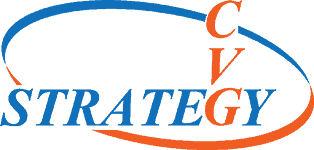
Shock MIL-STD-810 Method 516 is an environmental test that can be used to verify that equipment can withstand shocks encountered during transportation, service, and handling. It can also be used to assess fragility levels for determination of stowage, packaging, or mounting requirements and is used to test the strength of devices such as fasteners to ensure that equipment does not create hazards in crash scenarios.
Mechanical Shock Characteristics
There are multiple types of shock addressed in Department of Defense Standard MIL-STD-810 including Gunfire Shock, Ballistic Shock, and Shipboard Shock. Method 516 is focused on mechanical shocks. These shocks generally are limited to durations of 0.1 seconds or less and comprised of frequencies below 4,000 Hz.
These shocks cause the test item to respond to the forced frequencies of the shock profile and excitation of that item’s resonant frequencies. These environmental stresses can lead to a large number of adverse effects on equipment’s physical and functional integrity. These effects include, not only the expected deformations and accelerated fatiguing of components but can also include piezoelectric activities of electronic components and changes in electrical characteristics of components.
Procedures for Method 516 Shock
As of MIL-STD-810H change 1 there are eight procedures available for testing:
- Procedure I – Functional Shock assesses the ability of equipment to operate during and after exposure to shocks representative of those expected to be experienced during the operational life cycle of the item.
- Procedure II – Transportation Shock addresses shocks expected during logistic and tactical transportation phases of the life cycle.
- Procedure III – Fragility is normally conducted early in a product’s development to assess requirements for the design of packaging, stowage, and mounting configurations necessary to protect equipment.
- Procedure IV – Transit Drop uses actual physical drop tests to assess probable accidental incidents caused by loading, unloading, or being carried by personnel.
- Procedure V – Crash Hazard Shock Test is intended for components mounted in ground or air vehicles. It assesses the design of materiel mounts, containment configurations, and tiedowns so as to prevent hazards to occupants and bystanders.
- Procedure VI – Bench Handling replicates shocks that may be experienced during handling, maintenance, or packaging. Requirements are based on the nature of the item to be tested and its use in its life cycle.
- Procedure VII – Pendulum Impact is intended for large shipping containers. It assesses the container’s ability to withstand horizontal impacts without inducing damage to intended cargo.
- Procedure VIII – Catapult Launch/Arrested Landing is intended for equipment mounted on fixed wing aircraft that is expected to be subjected to take off and landings on aircraft carriers.
Considerations for Test Selection
MIL-STD-810 testing for Method 516 Shock presents many possibilities for testing. When considering which test scenarios to include in a test program, it is important to consider test duration, amplitude, and bandwidth of shock response spectrum profiles. It is generally unfeasible to test for all shock profiles, so risk assessment is required to determine those shocks that present the greatest concern.
Detailed Environmental Test Plan Templates
CVG Strategy offers EZ Test Plan Templates for MIL-STD environmental (climatic/dynamic) and EMI/EMC test documentation. Our Detailed Environmental Test Plans (DETP)s are written as specified in MIL-STD-810 Task 405. They are available for specific applications such as Ground Mobile, Ground Stationary, and Shipboard Controlled, Shipboard Uncontrolled, and Aircraft Military.
These DETPs include appropriate methods, (such as Shock MIL-STD-810 Method 516) addendums for product specific information, test labels for photo identification and data sheets for collection of required data. Profile (LCEP).
Our Electromagnetic Interference Test Plans are written as specified in MIL-STD-461. They contain the test methodology, addendums for product specific information, test labels for photo identification and data sheets. These plans are available for procedures listed in MIL-STD-461 and are also available for MIL-STD-1275, MIL-STD-704, and MIL-STD-1399-300.
Custom Test Plans are also available for applications not covered in the EZ Test Plan offerings. These plans can be written for any number of applications and their relevant standards.
MIL-STD-810 Training Classes
CVG Strategy MIL-STD-810 classes will provide you with the ability to develop and conduct an environmental test program. Our two day course not only provides you with valuable information about climatic and dynamic test methods but also includes training in the methodology to correctly apply test tailoring.
This course is available online or onsite. Ample time is available for questions and comments so that participants are encouraged to keep engaged. Check here for our online Training Registration Schedule.
Put CVG Strategy’s Experience to Work for You
Companies of all sizes, from start up to established product developers, face challenges in product test and evaluation. This can particularly be the case when a product is developed for a new market sector or expanding sales internationally.
Properly tested products prevent costly product recalls, product redesign, and product liability. They maintain customer satisfaction and keep your company’s reputation in good standing. Contact CVG Strategy to see how our services can assist your engineering team with Shock MIL-STD-810 Method 516 or any other test and evaluation concern.


